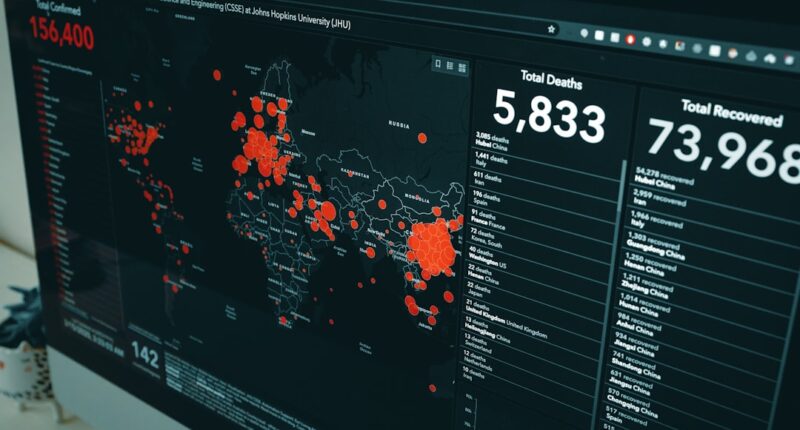Non-fungible tokens (NFTs) have emerged as a revolutionary force in the digital landscape, fundamentally altering how we perceive ownership and value in the virtual realm.
This uniqueness is what gives NFTs their value, allowing artists, musicians, and creators to tokenize their work and sell it directly to consumers without intermediaries.
The rise of NFTs has not only democratized access to art and collectibles but has also opened new revenue streams for creators, enabling them to earn royalties on secondary sales. The impact of NFTs on the market has been profound, leading to a surge in interest from both investors and collectors. High-profile sales, such as Beeple’s digital artwork “Everydays: The First 5000 Days,” which sold for $69 million at Christie’s, have captured global attention and sparked discussions about the future of art and ownership.
This newfound interest has led to the proliferation of NFT marketplaces like OpenSea, Rarible, and Foundation, where users can buy, sell, and trade these digital assets. As a result, traditional industries are beginning to explore how NFTs can be integrated into their business models, from music and gaming to real estate and fashion. The potential for NFTs to disrupt established markets is significant, prompting both excitement and skepticism among industry experts.
Key Takeaways
- NFTs are revolutionizing the market by providing a new way to buy, sell, and trade digital assets.
- Advanced tools like NFT project tracking platforms help investors and collectors stay informed about the latest NFT projects and trends.
- When researching NFT projects, it’s important to look for factors like the project’s team, concept, and community engagement.
- Analyzing NFT project data and metrics can provide valuable insights into the project’s performance and potential for growth.
- Blockchain technology is essential for NFT research, providing transparency and security for transactions and ownership.
Advanced Tools for NFT Project Tracking
Customizable Dashboards for Data-Driven Insights
One such tool is Dune Analytics, which allows users to create custom dashboards that visualize blockchain data related to NFTs. By leveraging the power of SQL queries, users can extract specific information about sales trends, user engagement, and market dynamics, enabling them to identify promising projects or potential pitfalls.
Actionable Insights into NFT Projects
Another noteworthy tool is Nansen, which combines on-chain data with wallet labeling to provide users with actionable insights into NFT projects. Nansen’s unique approach allows users to track the movements of influential wallets, analyze trading patterns, and assess the overall health of various NFT collections.
Granular Insights for Informed Decision-Making
This level of granularity is essential for investors looking to capitalize on emerging trends or avoid projects that may be losing traction. Additionally, platforms like Rarity.tools offer detailed rarity rankings for NFT collections, helping collectors understand the relative value of individual tokens within a larger set. These advanced tracking tools empower users to navigate the complexities of the NFT market with greater confidence.
Researching NFT Projects: What to Look For

When researching NFT projects, several key factors should be considered to gauge their potential for success. First and foremost is the project’s team and their track record in the industry. A strong team with experience in blockchain technology, art, or gaming can significantly enhance a project’s credibility.
Investigating the backgrounds of team members through platforms like LinkedIn or Twitter can provide valuable insights into their expertise and previous accomplishments. Additionally, community engagement is crucial; projects with active and passionate communities often have a better chance of long-term success. Platforms like Discord and Twitter serve as hubs for community interaction, where potential investors can gauge sentiment and enthusiasm.
Another critical aspect to consider is the project’s utility and roadmap. Does the NFT offer any unique features or benefits beyond mere ownership? Projects that incorporate gamification elements or provide access to exclusive content tend to attract more interest.
A well-defined roadmap outlining future developments can also instill confidence in potential investors. For instance, projects like Axie Infinity have successfully integrated gameplay mechanics with NFT ownership, creating a thriving ecosystem that incentivizes participation. Furthermore, examining partnerships and collaborations can provide insight into a project’s legitimacy; established brands or artists backing an NFT project can lend credibility and attract a wider audience.
Analyzing NFT Project Data and Metrics
Analyzing data and metrics related to NFT projects is essential for making informed investment decisions. Key performance indicators (KPIs) such as sales volume, average sale price, and number of unique buyers can provide valuable insights into a project’s market performance.
Platforms like CryptoSlam aggregate data from various marketplaces, allowing users to compare different NFT collections based on these metrics. Another important metric is the floor price—the lowest price at which an NFT from a particular collection is currently listed for sale. Monitoring floor prices can help investors gauge market sentiment; a rising floor price may suggest increased demand for a collection, while a declining floor price could indicate oversupply or loss of interest.
Additionally, analyzing secondary market activity can provide insights into liquidity; projects with high trading volumes are generally more liquid, making it easier for investors to buy or sell their assets without significant price fluctuations. By leveraging these data points, investors can develop a more nuanced understanding of the NFT landscape.
Utilizing Blockchain Technology for NFT Research
Blockchain technology plays a pivotal role in the research and analysis of NFTs. The decentralized nature of blockchain ensures transparency and immutability, allowing researchers to trace the provenance of digital assets easily. Each transaction involving an NFT is recorded on the blockchain, providing a verifiable history of ownership that can be crucial for assessing authenticity and value.
This transparency helps mitigate issues related to fraud or counterfeit assets, which have historically plagued the art world. Moreover, blockchain explorers like Etherscan enable users to delve deeper into specific transactions related to NFTs. By examining wallet addresses and transaction histories, researchers can gain insights into buying patterns and identify influential collectors or investors within the space.
This information can be invaluable for understanding market dynamics and predicting future trends. Additionally, smart contracts—self-executing contracts with the terms directly written into code—allow for automated royalty payments to creators upon secondary sales, further enhancing the appeal of NFTs for artists and ensuring they receive ongoing compensation for their work.
NFT Project Due Diligence: Best Practices

Conducting thorough due diligence is paramount when investing in NFT projects. One best practice is to verify the authenticity of the artwork or asset being tokenized. This involves checking whether the creator has legitimate rights to the work and whether it has been properly attributed on platforms like OpenSea or Rarible.
Engaging with the creator through social media channels can also provide insights into their intentions and commitment to the project. Another critical aspect of due diligence is assessing the project’s community engagement and social media presence. A vibrant community often indicates strong support for a project, while a lack of engagement may raise red flags.
Investors should also scrutinize the project’s whitepaper or website for clarity regarding its goals, roadmap, and utility. Projects that are vague or lack detailed information may pose higher risks. Furthermore, it’s advisable to keep an eye on external factors such as regulatory developments or market trends that could impact the NFT landscape as a whole.
NFT Project Tracking Platforms and Resources
Numerous platforms have emerged to assist investors in tracking NFT projects effectively. One prominent resource is OpenSea Analytics, which provides comprehensive data on sales trends across various collections listed on OpenSea. Users can filter by date ranges, categories, and other parameters to gain insights into market performance.
Similarly, platforms like NonFungible.com offer detailed analytics on NFT sales across multiple marketplaces, allowing users to compare performance metrics across different collections. Additionally, social media platforms play an essential role in tracking NFT projects. Twitter has become a primary source of information for real-time updates on new drops, collaborations, and community sentiment.
Following influential figures in the NFT space can provide valuable insights into emerging trends or potential investment opportunities. Discord servers dedicated to specific projects often serve as hubs for community discussions and announcements, making them invaluable resources for staying informed about project developments.
The Future of NFT Research and Tracking Tools
As the NFT market matures, we can expect significant advancements in research and tracking tools designed specifically for this space. The integration of artificial intelligence (AI) and machine learning algorithms could revolutionize how we analyze NFT data by providing predictive analytics that help investors anticipate market movements based on historical trends. These technologies could also enhance user experience by offering personalized recommendations based on individual preferences and investment behaviors.
Moreover, as regulatory frameworks surrounding NFTs continue to evolve globally, tracking tools will likely incorporate compliance features that help investors navigate legal considerations associated with digital assets. This could include automated alerts regarding changes in regulations or tax implications related to NFT transactions. As more industries adopt NFTs—ranging from gaming to real estate—the demand for sophisticated research tools will only grow, paving the way for innovative solutions that cater to both seasoned investors and newcomers alike in this dynamic market landscape.
If you’re interested in diving deeper into the world of NFTs and exploring different job opportunities within the industry, you may want to check out this article on NFT Jobs: Hello World. This article provides valuable insights into the various roles available in the NFT space and offers tips on how to break into the industry. It complements the information provided in NFT Nerds: Advanced Tools for Tracking and Researching Projects, helping readers gain a more comprehensive understanding of the NFT ecosystem.
FAQs
What are NFT Nerds?
NFT Nerds is a platform that provides advanced tools for tracking and researching NFT projects in the blockchain space. It offers a range of features to help users make informed decisions about NFT investments and opportunities.
What kind of tools does NFT Nerds offer?
NFT Nerds offers tools for tracking NFT project data, including historical sales, floor prices, and project activity. It also provides research tools for analyzing NFT projects, such as market trends, project comparisons, and project metrics.
How can NFT Nerds help with NFT investments?
NFT Nerds can help users make more informed decisions about NFT investments by providing data and insights on NFT projects. Users can use the platform to track project performance, analyze market trends, and compare different NFT projects to identify potential opportunities.
Is NFT Nerds suitable for beginners in the NFT space?
NFT Nerds is designed for users with some level of experience in the NFT space, as it provides advanced tools and data for tracking and researching NFT projects. Beginners may find the platform useful for learning about NFT project metrics and market trends, but it may be more suitable for users with some familiarity with NFTs.
How can I access NFT Nerds?
NFT Nerds is accessible through its website, where users can sign up for a subscription to access its tools and features. The platform offers different subscription plans with varying levels of access to its tools and data.





